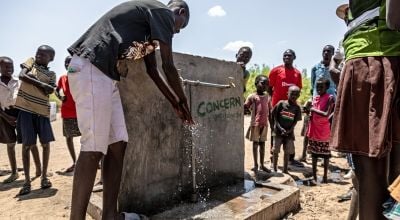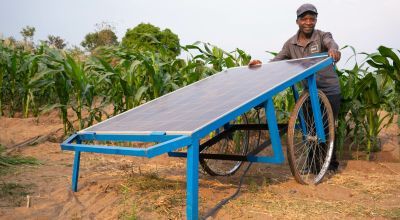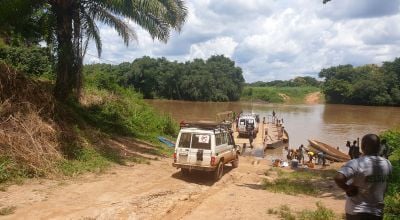
Read our 2023 annual report

Knowledge Hub
From droughts to floods to infrastructure, a full 25% of the world’s population is facing water stress and scarcity. These crises only threaten to get worse in the next few years.
What do water stress and water scarcity mean?
Water is a complex issue given that there is no one primary cause for the global water crisis. Water scarcity is a more objective means of comparing the availability (or lack thereof) of water across countries, usually representing the ratio of a region’s water demand to water supply. This means that we can quantify the water crisis on the whole.
However, this doesn’t account for all of the risks involved in the global water crisis. Water stress is therefore a broader term that basically means that there is not enough potable water to meet demand. This not only accounts for what’s available, but also the quality of water, environmental factors that determine a country’s future water availability, and public management of water infrastructure. This is why, as we can see below, a country like Nepal — with abundant water resources — can still face water shortages. This can be a bit more subjective, which is why one organisation may prioritise certain indicators to rank water scarcity and another may focus on other — equally valid — factors to come up with a slightly different ranking.
Regardless of the names we use or the order we put countries in, the problem is the same: We need water in order to live. Unfortunately, these 10 countries are among those where that is becoming an increasingly larger challenge.
1. Lebanon
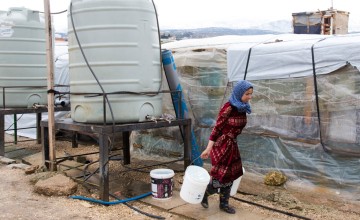
Last summer, UNICEF reported that more than 71% of Lebanon’s population faced critical water shortages. Since then, the situation has further devolved due to ongoing drought in the Middle East combined with Lebanon’s economic crisis and the country’s poorly-managed water systems. The economic crisis has caused prices to skyrocket, and made water an even harder commodity to access: In 2019, 1,000 Lebanese pounds could buy approximately one gallon of bottled water. Today, that price is closer to 8,000 pounds. The most vulnerable residents face the greatest impacts of this water scarcity, especially Lebanon’s large refugee communities, who lack reliable access to basic sanitation services. Health centres around the country, including the capital of Beirut, are also faced with life-threatening water shortages. According to the World Resources Institute, Lebanon has the third-highest risk for water scarcity in the world, just behind Qatar and Israel. Overall, the Middle East is the region with the highest rates of water scarcity, and the effects carry an impact beyond borders.
Concern has been in Lebanon since 2013 as part of our regional response to the Syrian crisis, with a special focus on water, sanitation, and hygiene services. We work closely with the Lebanese government and municipalities to rehabilitate stormwater systems and sanitation infrastructure.
2. Pakistan
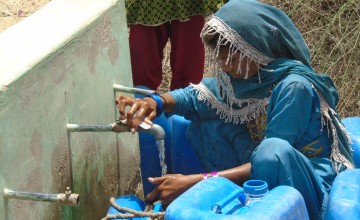
While WRI ranks Lebanon as number three for water scarcity, a recent report from the International Monetary Fund ranks Pakistan as the third most water-stressed country in the world. The United Nations Development Programme and Pakistan Council of Research in Water Resources have also warned that the country could face absolute water scarcity by 2025.
Water has been an ongoing issue in Pakistan, particularly over the last 35 years. Experts link this to the country’s rapid population growth and urbanisation, although rural parts of the country also consume high amounts of water for farmland, most of which is irrigated through canal systems that are underpriced. Climate change is also a major factor. As Mian Ahmed Naeem Salik, an environmental expert and fellow at Islamabad's Institute of Strategic Studies, told German news site Deutsche Welle in 2018: “At the time of Pakistan’s birth in 1947, forests accounted for about 5% of the nation’s area, but they have now dropped to only 2%.” With more exposed surfaces creating heat traps, and little investment in public works like dams and reservoirs, over 16 million people in Karachi alone lack access to clean water.
Concern has been in Pakistan for 20 years, and our programmes in the country have largely focused on drought response, climate resilience, and disaster risk reduction. Most recently, we took the lead in a consortium working on a five-year programme, Building Disaster Resilience in Pakistan (BDRP). The programme is aimed to increase the capacity of communities in nine districts that face acute risk for natural disasters, allowing them to better deal with these risks through better planning, preparedness, response, and resource allocation at the government and community levels. This includes addressing the water, sanitation, and hygiene needs unique to a crisis. Despite the social distancing measures of 2020, the final year of the programme, we reached almost 87,000 participants.
3. Afghanistan
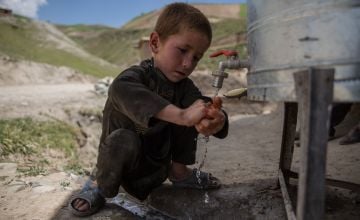
Water has become even scarcer in Afghanistan in the wake of the recent political upheaval and transition in the country, the latest developments of a decades-long crisis fed by conflict, instability, natural disasters, economic insecurity, and climate change — including the worst drought in the last 27 years. UNICEF estimates that 8 out of every 10 Afghans drink unsafe water, and 93% of the country’s children live in areas with high water scarcity and vulnerability.
Concern has been in Afghanistan since 1998. This includes watershed management, the practice of maintaining an area of land that channels all water running underneath it into a single, larger body of water for communities to use. This solution reduces the frequency and impact of flooding and soil erosion, and helps to maintain water levels through increased soil moisture and groundwater recharge.
4. Syria
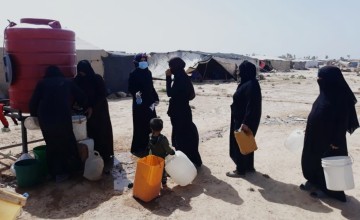
At the end of 2021, northern Syria was experiencing its worst drought in nearly 70 years due to low levels of water in the Euphrates River. Over a decade of conflict exacerbating climate-change–related weather events. Before 2010, the International Committee of the Red Cross reports, 98% of people in Syria’s cities and 92% of people in its rural communities had reliable access to safe water. That’s dropped by over 40%, with only 50% of water and sanitation systems still functioning. “The triggers of the water crisis are layered and complex,” the Red Cross writes, “but one thing is clear: they are the direct and indirect consequences of the ongoing conflict.” Water scarcity has also been linked to the beginnings of the current conflict, as well as historical conflicts in the country.
In the middle of 2019, Concern began the third phase of a multi-sector response in Syria funded by ECHO (European Civil Protection and Humanitarian Aid Operations). This included WASH services in the country, which had left over 6 million Syrians in need of support for clean water and adequate hygiene and sanitation services.
In that year alone, we reached over 85,000 people through water trucking into camps for internally-displaced people, rehabilitating water stations, and providing emergency assistance to camps that required water points and latrines. We also identified several water stations and networks to rehabilitate and improve, which will reach an additional 262,000.
5. Türkiye
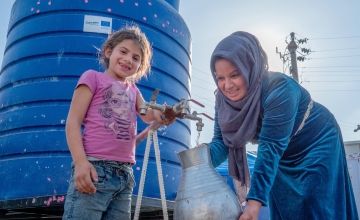
Like neighbouring Lebanon and Syria, Türkiye was not immune to extreme water scarcity in the summer of 2021, the byproduct of the hottest heat wave in six decades. The Yale School of the Environment reported that 770 square miles of land were destroyed by wildfires, also caused by the heatwave, and 60% of the country is prone to desertification. Speaking with Yale, Karim Elgendy, a sustainability expert on the region for London’s Chatham House, warned that the land could become “a terrain not dissimilar from Badlands National Park in South Dakota.”
The severe drought conditions are combined with lower groundwater levels, which in turn have been brought about largely by the climate crisis and inadequate water management policies.
Concern began working in Türkiye in 2013, as part of our response to the Syrian refugee crisis. Our work in the country largely focuses on providing assistance to these refugees and host populations through programmes geared towards education, livelihoods, and social protection.
6. Burkina Faso
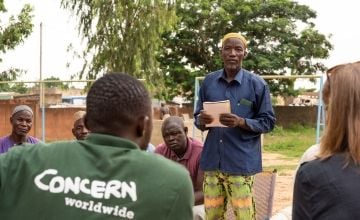
From October to May, Burkina Faso undergoes its dry season (one that has become extended in recent years due to climate change). This means that the landlocked country in west Africa, which also borders the Sahara Desert in the north, spends more of its year than not without rains. Conflict in the country’s northern Sahelian region has only exacerbated water scarcity, leaving the task of fetching water a daylong activity (mostly for women). Oxfam estimates that water access has dropped by 40% in some areas of the country. In host communities for internally-displaced Burkinabés, infrastructure has struggled to keep up with demands for healthcare, clean water, and adequate sanitation services.
Concern began work in Burkina Faso last year, with a major focus on water, sanitation, and hygiene services. In our first year, we provided 500 families — both members of the internally-displaced and host communities — with unconditional, multi-purpose cash transfers combined with hygiene campaigns. We’ve also worked with 200 additional families on a cash-for-work programme that improves livelihoods as well as local sanitation infrastructure.
7. Niger

Niger borders Burkina Faso’s northeastern territory, and sits completely within the Sahel, leaving the entire country threatened by drought and desertification. In regions like Tillabéri, which is largely rural, there is a chronic shortage of clean water, particularly during the warm months which regularly see temperatures beyond 100° Fahrenheit. UNICEF estimates that only 56% of Nigeriens have access to a source of drinking water, and just 13% have access to basic sanitation services. In the areas that need help the most, violence and insecurity make it difficult for experts to assess the situation and work with communities to find tenable solutions.
Concern first started working in Niger nearly 20 years ago, and our work continues to find sustainable solutions to the climate crisis in this country, particularly as it relates to food security. With so many Nigeriens dependent on agriculture for food and livelihoods, even the smallest variation in rain can carry a large impact. We work with communities, health structures, and national authorities to develop preparedness and response actions to better anticipate and reduce the consequences and the impact of natural disasters such as droughts. Last year, we reached over 404,000 people with this work.
8. Nepal
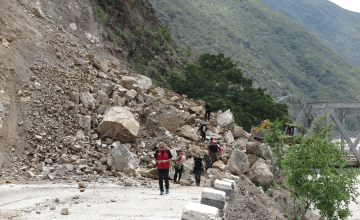
Unlike many of the countries on this list, Nepal is home to 2.7 % of the earth's available freshwater thanks to a number of glaciers, rivers, springs, lakes, groundwater, and high amounts of rainfall. It ranks behind Brazil as one of the most water-abundant countries. However, it’s also a country where water scarcity has reached a crisis point, especially in the last 20 years. While Nepal has many water sources, its network and infrastructure is not able to meet supply or demand. In 2020, the region that’s home to capital city Kathmandu met less than 20% of its local water needs. Of the eight rivers that flow through Kathmandu, none are clean.
The rapid urbanisation of the city is one key reason that water has become scarce in a country that’s home to approximately 6,000 rivers. Kishore Thapa, a former secretary for the Ministry of Urban Development, said part of this owed to “too much politics on development projects… We failed to implement our laws effectively on urban development, which led to haphazard urbanisation.” The city also faced infrastructural setbacks due to the 7.8-magnitude earthquake that hit the country in 2015.
Concern had worked in Nepal from 2010 to 2015, and returned to the country following the earthquake. Part of our focus in each setting was WASH; as part of earthquake recovery, we built nearly 1,000 temporary latrines, bathing units, and household latrines and established two water supply systems.
9. Iraq
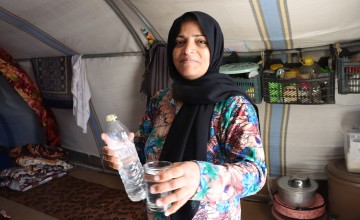
According to a report released by UNICEF last August, nearly 3 out of 5 children in Iraq have no access to safe water. It’s also absent in more than half of the country’s schools. The effects of the climate crisis in the region, along with disputes with neighbouring countries, have left 7 million Iraqis facing water scarcity and many of its ripple effects. This is especially true for the more than 1 million internally-displaced Iraqis and over 300,000 refugees hosted in Iraq’s displacement camps, where water and sanitation services are even rarer.
Concern began working in Iraq four years ago in response to both the Syrian crisis and Iraq’s own high numbers of internal displacement. WASH is one of the key focuses of our work in displacement camps. Alongside our partner organisation Kurdistan Reconstruction and Development Society (KURDS), we successfully took over responsibility for water, sanitation, and hygiene management in nine of these camps. Coinciding with the COVID-19 pandemic, management of these services has focused on ensuring an adequate supply of safe and sustainable water as well as the provision of hygiene and sanitation materials such as soap, in line with government and WHO guidelines.
10. Sudan
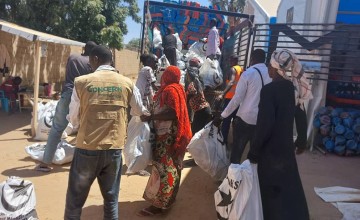
Just south of Egypt and across the Red Sea from Saudi Arabia, the Republic of Sudan sits in an area of Northern Africa that sees many of the same effects of drought and climate change as the Middle East. Approximately 97% of the country’s water use goes into agriculture (which accounts for 80% of Sudanese livelihoods), meaning that increasingly scarce water resources carry multiple threats for the country. However, it’s also this high amount of farming activity that’s led to added desertification of Sudan. Available groundwater resources are shared across borders with Egypt and Ethiopia, leading to additional diplomatic stresses around water consumption. Sudanese civilians pay the ultimate price: Over 40% of families lack access to basic water services. What’s more, 67% of the population lacks access to basic sanitation services.
This has effects in the opposite direction: In 2020, the country also faced devastating floods as the Nile reached its highest point in 100 years. On average, 200,000 people each year are affected by flooding in Sudan, but, in 2020, these floods affected over 800,000. One of the biggest concerns was waterborne diseases, the spread of which was encouraged by the fact that only a third of the country has basic sanitation support.
Concern has been in Sudan for 36 years, including the water-stressed areas of West Darfur and both West and South Kordofan. In Darfur, we worked with over 53,500 through an integrated programme focusing on livelihoods, health and nutrition, and water and sanitation projects. This helped to decrease the hunger gap (the number of months during which the most vulnerable households don’t have enough to eat) from 3.65 months at the beginning of the project to 1.8 in 2020. As part of this work, we renovated 18 old water points, drilled four new ones, and worked with families to develop Climate Smart Agriculture techniques and alternative livelihoods to help offset both financial and environmental risks of relying solely on farming.
The global water crisis: Concern’s approach
Ensuring access to clean water and sanitation and providing hygiene information and training are key aspects of Concern’s work, with active water, sanitation, and hygiene (WASH) programmes in 18 countries.
Over the last 55 years, we have dug, drilled, and bored thousands of wells in remote and vulnerable communities across dozens of countries, and built countless latrines in their schools and health centres. The hours saved and the illnesses prevented make it one of the most effective things we do.
When drought or displacement prevent access to clean water supplies, we do what it takes to connect communities, including trucking water to temporary tanks and installing pumps in camps. We work hand-in-hand with communities to help them assess the longstanding challenges they face, change behaviours, and ensure water and sanitation infrastructure will be maintained for the long term. And we foster a sense of ownership, build sustainable maintenance practices, and create transparent financial management systems that benefit the community.



